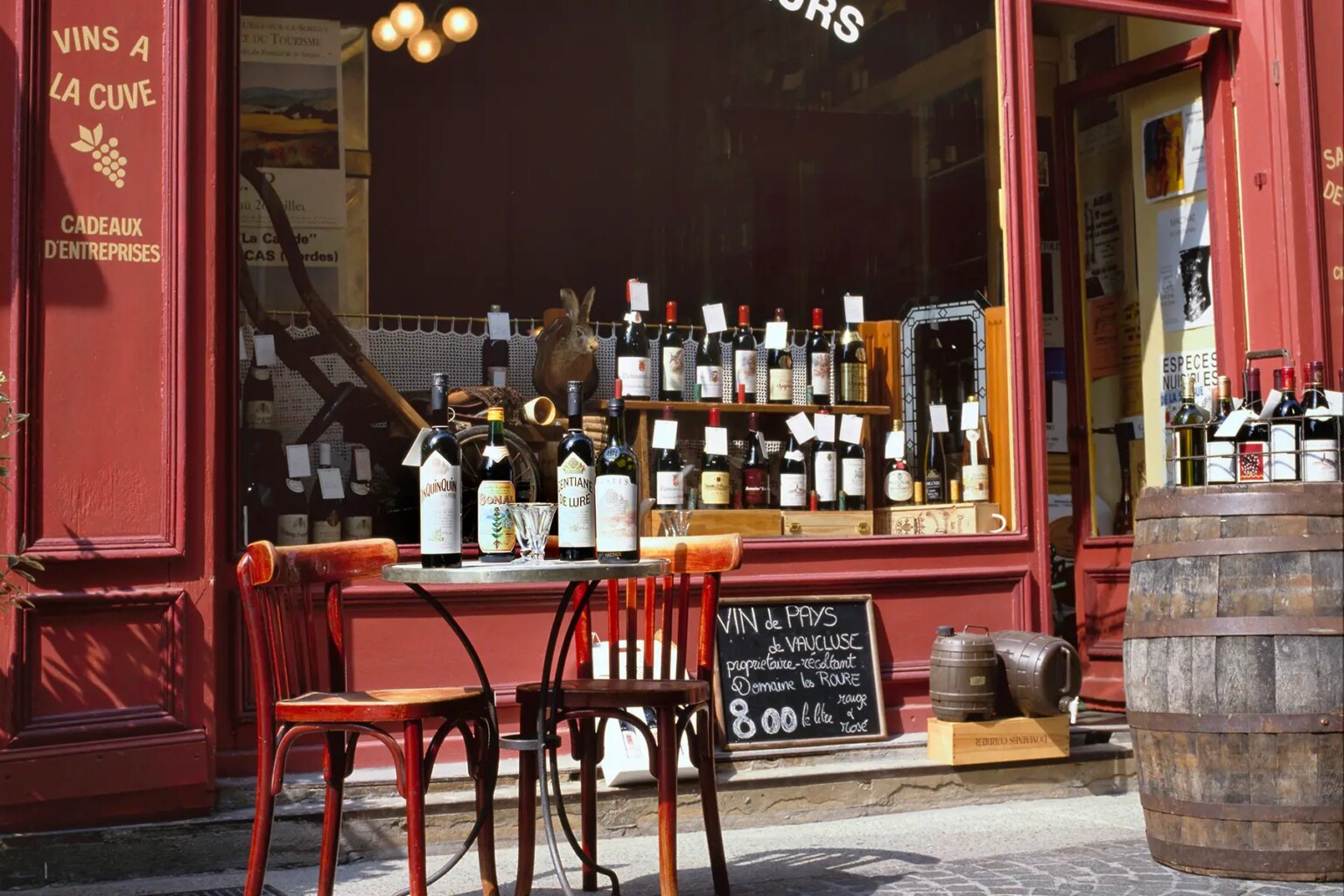With elegant labels that say Bourgogne or Pays d’Oc instead of “Pinot Noir” or “Sauvignon Blanc,” French wines can feel like a cryptic puzzle. But behind that mystique is a well-organized (and very French) system, designed to protect tradition, quality, and a deep sense of regional pride.
Here’s what you need to know to navigate French wine like a local (or at least confidently fake it until your next vineyard visit):
Allianz Travel
Get insured for your next trip with Allianz Travel. A world-leader in travel insurance, their tailor-made plans will safeguard you on your trips within and beyond France. Whether you’re planning a weekend-getaway or moving your life overseas, have complete peace of mind wherever you go with Allianz Travel.
How do French wine classifications work?
France is world-famous for its wine, but choosing a bottle can be confusing for newcomers. You won’t find the words “Chardonnay” or “Cabernet Sauvignon” prominently displayed on most labels. Instead, French wines are labeled by region rather than grape variety.
France follows a strict classification system designed to protect the wine’s quality and authenticity. The regulations dictate everything from vineyard locations to harvest methods. And while this can make choosing a wine more complex, it also ensures that each bottle reflects its region’s unique character.

Here are the three labels to keep in mind:
Appellation d’Origine Contrôlée – the highest standard
The Appellation d’Origine Contrôlée (AOC) label represents the strictest wine classification in France. It guarantees that the wine comes from a specific region and follows strict production rules, including which grape varieties can be used, how they are grown, and how the wine is made. For example, Chablis AOC is a white Chardonnay produced exclusively in the Chablis region using approved methods.
Since 2012, AOC has also been referred to as Appellation d’Origine Protégée (AOP) under EU regulations, though both terms are still used interchangeably.
Indication Géographique Protégée – more flexibility, still regional
One step below AOC, Indication Géographique Protégée (IGP) wines – formerly known as Vin de Pays – offer more flexibility in terms of grape varieties and production methods, while still maintaining a regional identity. For example, IGP Pays d’Oc is a broad designation for wines from the Languedoc-Roussillon region.
Although IGP wines don’t have the same prestige as AOC wines, they allow winemakers to experiment with different techniques and blends, resulting in exciting and often more modern styles. These wines are high-quality yet affordable bottles and are especially great for everyday drinking.
Vin de France – the most accessible category
At the most basic level, Vin de France wines have the fewest restrictions. They don’t have to come from a specific region, and winemakers can blend grapes from multiple areas. This category includes table wines and simple, easy-to-drink bottles.
While some Vin de France wines are mass-produced, others are hidden gems made by independent winemakers.
What are the key wine regions in France?
France has several famous wine regions, each known for its distinctive styles and grape varieties. For instance, Bordeaux is known for its red blends like Cabernet Sauvignon and Merlot.

Some of the most significant French wine regions include:
- Alsace – this part of France is known to produce some of the best dry and off-dry white wines (e.g., Riesling, Gewürztraminer, Pinot Gris, Muscat). Wines from this region are aromatic, floral, and food-friendly.
- Bordeaux – this region is famous for its full-bodied red wines (e.g., Cabernet Sauvignon, Merlot), which are often aged in oak.
- Burgundy (Bourgogne) – often revered as the holy grail of Pinot Noir and Chardonnay, this province produces elegant wines. The lighter reds have earthy notes, while the whites are rich and mineral-driven.
- Champagne – home to the sparking wine, this province is the only one in France that is allowed to produce true Champagne. The wines here are known for their high acidity and fine bubbles, and they’re often aged for complexity.
- Languedoc-Roussillon – this is the largest wine-producing province in France. Some call it France’s wine laboratory because of its experimental winemaking styles. Wines from this part are a mix of red, white, and sparkling, with a great quality-to-price ratio.
- Loire Valley – known as the “Garden of France”, this region is celebrated for its crisp whites (e.g., Sauvignon Blanc, Chenin Blanc), light reds (e.g., Cabernet Franc), and sparkling wines.
- Provence – this area is famous for its rosé wines (e.g., Côtes de Provence) and Mediterranean-style wines. Light, dry, and simply refreshing.
- Rhône Valley – celebrated for its full-bodied reds (e.g., Syrah, Grenache, Mourvèdre), wines from this region are robust, spicy, and deeply concentrated.
How to choose the right French wine for your meal
You’ll be (maybe) surprised to hear that there are no set rules on matching food and wine. That’s because the goal of wine pairing is to enhance the flavors of both the meal and the wine – which ultimately comes down to personal taste.
That said, there are certain combinations that work better than others.
When picking out a wine, you should consider the overall flavor profile of the dish. For example, if you’re eating something salty, you may choose a fruity, acidic wine like Riesling or Sauvignon Blanc. Likewise, if you’re eating a fatty dish (e.g., steak), you can pair it with a bold, mouth-puckering red, such as Cabernet Sauvignon, Merlot, or Malbec.

It’s important to look at the plate as a whole. For example, lighter meats often come with a sauce that is likely the primary flavor element – and you’ll have to pair your wine with the sauce. So, if you’re eating seafood prepared in coconut milk, you’ll want to go with a rich Chardonnay that offers a similar creamy texture. Meanwhile, a pasta dish with a lemon cream sauce would benefit from a citrusy Sauvignon Blanc or Pinot Grigios.
What pairs well with white wine?
The general rule of thumb for white wine is to pair it with lighter dishes (e.g., salads), light-intensity meats (e.g., chicken and fish), citrus-based sauces, and almost any kind of cheese. For example:
- Chardonnay – white meat (e.g., pork), meaty fish (e.g., salmon), shellfish (e.g., snails), vegetables like green peas and zucchini, mild and creamy cheeses (e.g., brie), and butter and cheese-based sauces
- Chenin Blanc – poultry (e.g., duck, goose), white fish, shellfish (e.g., oysters), vegetables like corn and spinach, fresh and creamy cheeses (e.g., cream cheese, brie), citrus-based sauces, and spicy food
- Pinot Grigio – white meat and poultry, white fish, shellfish, vegetables like green peas and asparagus, fresh and mild cheeses (e.g., goat cheese, mozzarella), and citrus-based sauces and foods (e.g., ceviche)
- Riesling – salty white meat (e.g., ham, sausage), fatty poultry (e.g., duck, goose), fish, shellfish, vegetables like sweet potato, salty cheeses (e.g., gorgonzola, parmesan), and citrus-based sauces
- Sauvignon Blanc – white meat and poultry, fatty fish (e.g., mackerel), shellfish, vegetables like asparagus and eggplant, cheese, and citrus-based sauces
What pairs well with rosé?
Rosé is a bit of a summer wine, so it goes really well with lighter Mediterranean dishes (e.g., salad). You can also serve it with light pasta and rice plates, white meats (especially when grilled), rich seafood, spicy dishes, fruits like strawberries and melon, and cheese.

What pairs well with red wine?
Red wines typically go well with heavier dishes, red meats (e.g., beef and lamb), tomato and herb-based sauces, and heavy cheeses. For example:
- Cabernet Franc – red meat (e.g., steak), meaty and oily fish (e.g., salmon, mackerel), roasted vegetables, legumes, cheeses like blue cheese and feta, tomato and vinegar-based sauces
- Cabernet Sauvignon – red meat, meaty fish, bitter vegetables, aged cheeses (e.g., cheddar), butter and cream-based sauces
- Malbec – red meat, poultry, vegetables like eggplant and squash, rich and semi-hard cheeses (e.g., Asiago), sweet and herb-based sauces
- Merlot – white and lean red meat, meaty fish, roasted root vegetables (e.g., carrots, beets), nutty cheeses (e.g., Gruyère), tomato and mushroom-based sauces
- Pinot Noir – white and red meat, poultry, oily fish, earthy vegetables like peas and tomatoes, semi-hard and hard cheeses, earthy sauces (e.g., truffle)
- Syrah – red meat, well-seasoned poultry, grilled vegetables, and hard and stinky cheeses
What pairs well with sparkling wine?
Champagne is lovely with soft French cheese (e.g., triple-cream brie) and rich, elegant dishes (e.g., caviar, smoked salmon, deviled eggs, and buttery snails). The acidity in the sparkling wine also makes it an excellent pairing for anything salty or fried, such as oysters, French fries, and fried calamari.
How to buy and order wine in France
Buying and ordering wine is pretty simple once you know the basics. Like we said earlier, France labels bottles by region. So, asking for a “red from the Rhône” will get you much further than simply saying “Syrah.”
At restaurants, you can order “un verre de vin” (a glass of wine) or “une bouteille” (a bottle). If you want something local and affordable, you can also request “le vin du moment” or “le vin en pichet” (the house wine), which is usually served in a carafe.
When in doubt, simply say: “Qu’est-ce que vous recommandez?” (What do you recommend?) and let the server decide.
French wine etiquette and culture
In France, drinking wine isn’t about getting tipsy; it’s about tasting flavors, appreciating craft, and enjoying good company. Unlike many other countries, the French rarely consume wine just for the sake of it. Instead, it’s usually paired with lunch or dinner, as a compliment to the meal.

When it comes to French wine etiquette, it’s polite to pour your own drink last. Don’t fill your glass to the top; it’s standard to pour around a third to allow the wine to breathe and swirl. When you’re toasting, make sure to look the other person in the eyes. Also, if you want to avoid seven years of bad sex, you must take a sip right after a toast.
Practical tips for expats
When you move to France, you’re entering a culture where wine is practically a national language. And if you’re not used to deciphering a wine list without seeing Chardonnay, it can feel a bit intimidating. Here are some tips to help you survive your first aperitif without looking clueless:
- Buy wine at a cave, not just a supermarket – while supermarkets are convenient, wine stores (cavistes) offer better guidance and often better quality. You don’t need to be an expert; just tell them your budget and what you’re cooking, and they’ll happy to recommend something.
- Look for the vin en vrac – in smaller towns or rural areas, some wine shops sell wine on tap. Just bring your own bottle and refill it cheaply; it’s eco-friendly and very local.
- Expensive wine doesn’t always mean good wine – there are numerous factors that go into pricing a wine, including the grape, the region, the winemaker, and the classification. While a bottle with an AOC label can be great, there are also plenty of affordable choices that are excellent wines as well.
- Don’t rush – wine is part of the social ritual. Sip slowly, talk about the flavors, and enjoy it with a meal. You’re not in a hurry – you’re in France.
Useful resources
- Masterclass – introduction to French wine
- Wine Folly – information on French wine labels
- Mill Kitchen and Bar – information on how to pair wine







